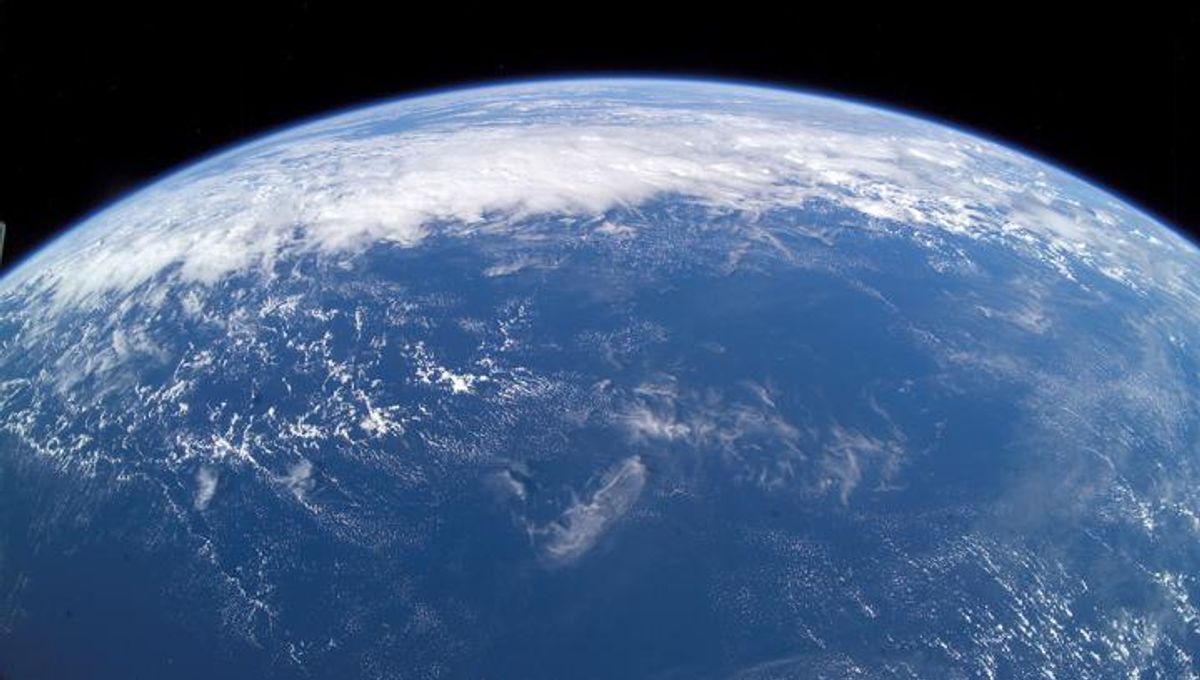
Geologists have unearthed new evidence that the Pacific Ocean plate is wracked with colossal faults, caused by the plate slowly drifting westward and plunging into the Earth’s mantle. The researchers believe their findings, if accurate, have the potential to redefine what we previously understood about how our planet works.
From our human perspective, Earth seems like a solid, immutable object. However, the planet’s geological structure is in a constant (albeit very, very slow) state of change.
Try to visualize Earth’s crust as puzzle pieces that float on a hot, gooey layer. The pieces of the jigsaw are tectonic plates: vast slabs of solid rock that slowly drift on top of the molten mantle. Oceanic plates are plates that are primarily under the ocean, while continental plates form continent land masses.
It’s currently assumed that the oceanic plates are largely rigid and only change shape near subduction zones along the plate boundaries. However, this new study suggests that isn’t necessarily the case.
Their discovery of fault damage at the center of the Pacific Ocean plate – including cracks that are thousands of meters deep and hundreds of kilometers long – indicates that the oceanic plates are not as rigid and strong as once thought.
“We knew that geological deformations like faults happen on the continental plate interiors far from plate boundaries, but we didn’t know the same thing was happening to ocean plates,” Erkan Gün, first study author from the University of Toronto, said in a statement.
“What we’re doing is refining plate tectonics — the theory that describes how our planet works — and showing those plates really aren’t as pristine as we previously thought,” added Professor Russell Pysklywec, also from the University of Toronto.
To reach these findings, the team used supercomputer models and existing data to study four plateaus in the western Pacific Ocean — covering a vast area roughly between Japan, Hawaii, New Zealand, and Australia.
The researchers say the Pacific Ocean plate being pulled westward is a bit like a tablecloth being pulled from a table. As the sheet is being tugged, certain patches of weaker cloth are more prone to tearing. These weak spots are the plateaus where the extensive fault damage has been located.
More work is needed before this theory is confirmed. These researchers hope their study will bring attention to the plateaus and inspire researchers to collect more data.
“The theory’s not carved in stone and we’re still finding new things. Now we know this fault damage is tearing apart the centre of an ocean plate — and this could be linked to seismic activity and volcanism,” explained Pysklywec.
“A new finding like this overturns what we’ve understood and taught about the active Earth. And it shows that there are still radical mysteries about even the grand operation of our evolving planet,” he concludes.
The new study is published in the journal Geophysical Research Letters.
Source Link: Pacific Plate May Be Tearing At Its Core, Redefining Current Theories